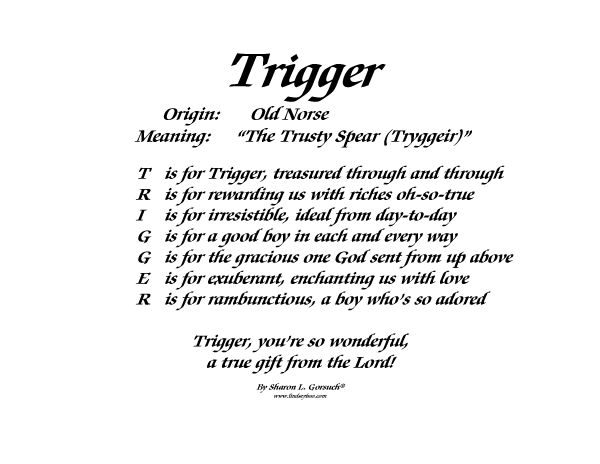Trigger Line Meaning Benefits Example

Contents
- 1 Trigger Line: Meaning, Benefits, Example
- 1.1 What Is a Trigger Line?
- 1.2 What Does the Trigger Line Tell You?
- 1.3 Benefits of the Trigger Line
- 1.4 Examples of How to Use the Trigger Line
- 1.5 The Difference Between the Trigger Line (MACD) and Signal Line (Stochastic)
- 1.6 Limitations of the Trigger Line
- 1.7 What Is a Trigger in Trading?
- 1.8 What Is the 5 3 1 Rule in Trading?
- 1.9 What Is Technical Analysis?
- 1.10 The Bottom Line
Trigger Line: Meaning, Benefits, Example
What Is a Trigger Line?
A trigger line is a moving average plotted on the moving average convergence divergence (MACD) indicator used to generate buy and sell signals for a security. The trigger line, or signal line, is a nine-period exponential moving average (EMA) of the MACD indicator line. Traders can adjust the EMA’s length to suit their trading strategy.
Key Takeaways
- The trigger line is a nine-period EMA of the MACD indicator.
- The trigger line can generate trade signals when the MACD crosses above or below it.
- Trade signals are not reliable without confirmation or filtering from other technical analysis or indicators.
What Does the Trigger Line Tell You?
The trigger line is a moving average of the MACD (or other indicator) calculation. It provides technical insight on when to go long or short. Traders look for entries and exits when the MACD line crosses the trigger line.
When the MACD crosses above the trigger line, this could be used as a buy signal. Conversely, when the MACD falls below the trigger line, this could be used as a sell or short signal.
Trade signals are not used in isolation. Another filter, such as the direction of the overall trend, is applied. For example, if the price is making higher swing highs and higher swing lows—an uptrend—then buy signals may be used to enter a trade. Sell signals would be used to close the trade.
Since the MACD may cross the trigger line multiple times before a substantial move, getting quality trade signals is harder in reality. Signals may produce profits in a strong trending market, but caution should be exercised when the price is not trending strongly.
Benefits of the Trigger Line
Indicators, including the trigger line, can make trading decisions systematic. Traders can remain in a position until the MACD crosses the trigger line in the opposite direction.
For example, if a long position is taken when the MACD crosses above the trigger line, the trader can stay in the trade until the MACD crosses below the trigger line. Using signals generated by the trigger line prevents second-guessing and discretionary decisions.
However, it is recommended to use other filters to avoid significant commissions and losses.
Examples of How to Use the Trigger Line
The following chart shows a strong uptrend in a stock. Based on the overall uptrend, buy signals could be used to open long positions, while sell signals would close the position.
Over the 13-month period, the MACD trigger line signaled multiple profitable long trade opportunities.
The indicator won’t work well in all conditions. Whenever possible, look for strong trends and use the trigger line for trade signals.
The Difference Between the Trigger Line (MACD) and Signal Line (Stochastic)
The terms are often used interchangeably. Trigger lines or signal lines are moving averages of the underlying indicator. The stochastic oscillator has a signal line similar to the MACD trigger line. The stochastic signal line (D) is a three-period moving average of the stochastic (K).
Limitations of the Trigger Line
In choppy markets, the trigger line can frequently crisscross the MACD and generate many buy and sell signals. To avoid getting whipsawed out of positions, traders should confirm a trigger line cross with other technical indicators or trend analysis.
The MACD is a lagging indicator. Adding a moving average can create more lag between when the price actually bottoms or tops and the indicator has a crossover. Sometimes buy signals are generated once the price has already risen substantially, or sell signals are generated after the price has already fallen significantly.
What Is a Trigger in Trading?
A trigger in trading is a market condition, usually the rise and fall in the price of a stock or an index, which triggers a sequence of trades; buys or sells. Triggers are used to automate trades, such as the buying or selling of a stock when it hits a specific price.
What Is the 5 3 1 Rule in Trading?
The 5 3 1 rule in trading stipulates a trader picks five currency pairs to learn and trade, three trading strategies to use these pairs with and become an expert in, and chooses one specific time during the day to trade and trade at that same time every day.
What Is Technical Analysis?
Technical analysis is a method of trading that utilizes statistical trends, such as price charts and volume data, to make trading decisions. The premise of technical trading lies in the belief that the historical data of a security can indicate a security’s future price movements.
The Bottom Line
The trigger line helps traders make informed decisions about when to go long or short and allows for a systematic trading process. However, the trigger line does not work well in all scenarios, such as choppy markets, so additional indicators are recommended.



